Here at IDEAL, we love a good vegetable. Blanched, steamed, raw, sauteed…the good green stuff is the backbone of our diet, make no mistake (can’t…won’t….mustn’t. Aaah….Must. Resist. Steak. Puns). So much so in fact, that to us, the idea of just one in twelve months dedicated to a plant based diet seems silly, faddish and not all that helpful, let’s be honest.
Instead, an eating regime of well-sourced food, grown, nurtured or raised with the least possible impact on the environment is the right diet for us. And for all those who after a couple of weeks of abstinence are really craving some protein, there’s surely nothing better to succumb for than a nice piece of beef. With that in mind, here are 8 IDEAL steps to the perfect steak.
Farm To Table
When talking steak, a minimal amount of fuss and frippery in the kitchen will generally lead to the most delicious results. That’s because all of the hard graft has been done on the farm. If you want a really, truly tasty piece of meat, then you’ll want to make sure it’s been ethically raised and sourced.
Buy independently, from a local butcher if you can, so your meat’s provenance is easier to trace. These guys care deeply about their product, not just the coin it’ll make. You’ll be supporting a local business too, not some multi-conglomerate who couldn’t care less about your stomach’s welfare, let alone an animals’. A no brainer, really.
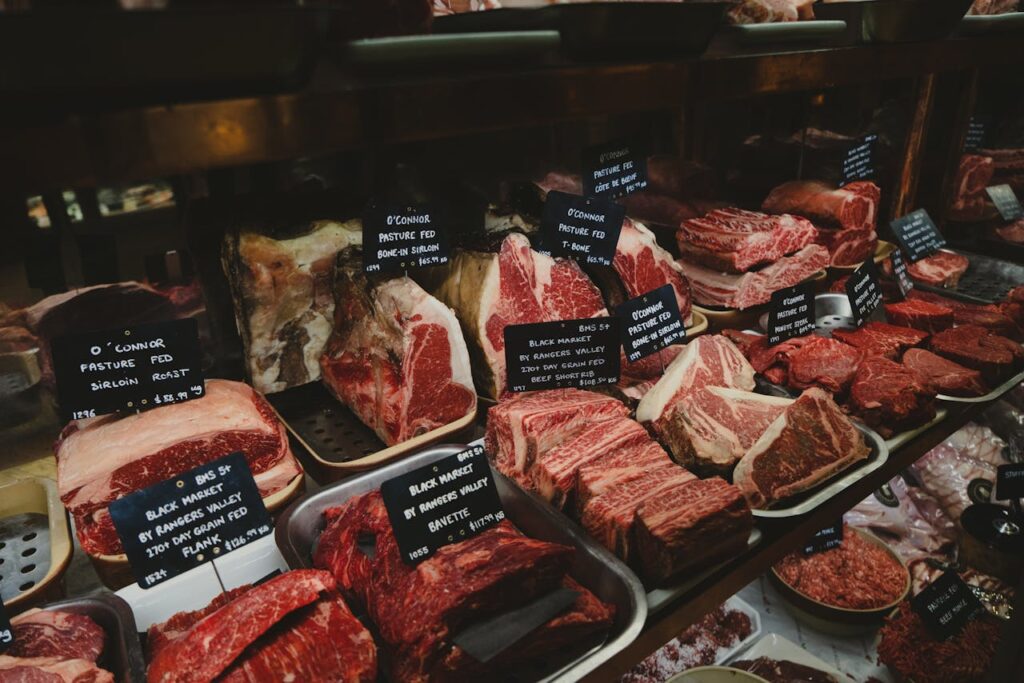
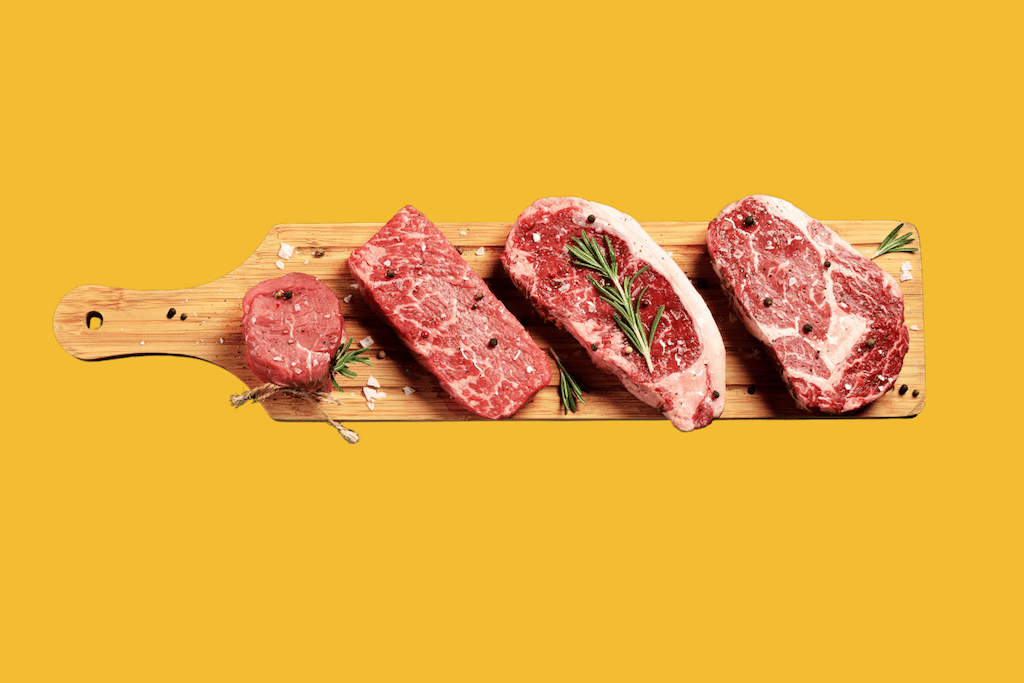
A Cut Above
What makes a great steak is, of course, a matter of personal preference. Do you value a melt-in-the-mouth tenderness, of meat the texture of butter and a minimal effort in chewing? Then you’ll be wanting to seek out a fillet; it’s the part of the cow which has done the least work possible and is as lean as you like. But no fat generally equals no flavour.
Connoisseurs will point you in the direction of something more marbled, such as the rump, which is full of the richness a good distribution of fat brings. We love flank or skirt, for the deep flavour they carry. Just decide what aspect of the eat you most value, and do your research thoroughly about which cut is for you.
Read: A guide to steak selection
A Dry Surface
Received wisdom dictates that you’ll want to take your steak out of the fridge and let it come up to room temperature before cooking. In reality, this doesn’t make a huge amount of difference to the end product. What does matter, if you want that charred crust and tender middle, is that your meat is as dry as can be before it hits the pan. You can use a whole roll of paper towels and a hairdryer if you wish, but more efficient is a salting of all surfaces and then allowing your steak to sit in the fridge, on a wire rack, overnight. The evenness of the finish and the flavour will be markedly improved.
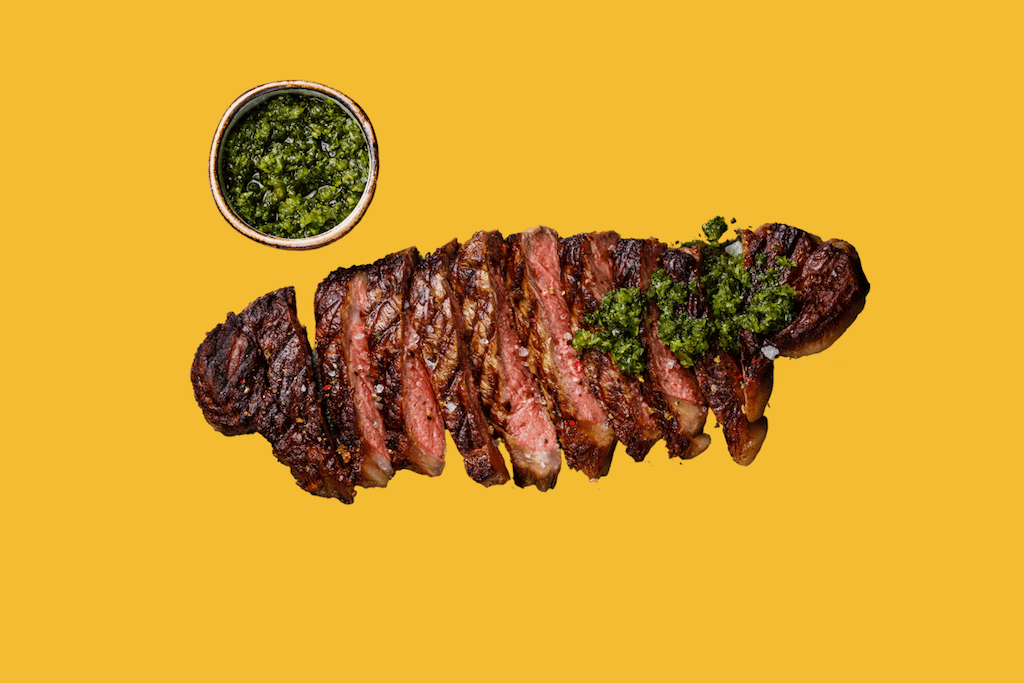
Neutral Oil In A Hot Pan
Assuming you don’t have an industrial grill set up in your kitchen, and it’s too much bother to set up the barbie in winter, you’ll get the results you’re after by using a griddle pan. We prefer searing our steak in a neutral oil, such as vegetable, with a high smoking point so you can get your pan nice and hot without burning the fat. That way, you’ll give the warmest, least intrusive (flavour-wise) welcome to the meat. With a hot pan, you’ll reach that illusive char finish as quickly as possible without overcooking the centre. Too low a temperature and you’re in danger of steaming your steak.
Read: Mastering the art of barbecued steak
Fiddling Is Fine
Where once it was taken as gospel that just one flip halfway through the cook would bring the most balanced cook, quite the opposite is now considered the best way to get an even caramelisation. We’ll let the good guys over at Serious Eats explain exactly why. But in short, flipping relentlessly is the way forward.
Seasoning Savvy
Hopefully you’ve followed our advice above to salt well in advance. The rest is up to you, but if you favour pure, unadulterated beef flavour, then you might not want to add much more in the way of seasoning. A few extra additions – a couple of twists of black pepper, butter in the pan for basting halfway through the cooking process, and perhaps a sprig of thyme or rosemary in there for good measure – certainly aren’t going to do any harm though.
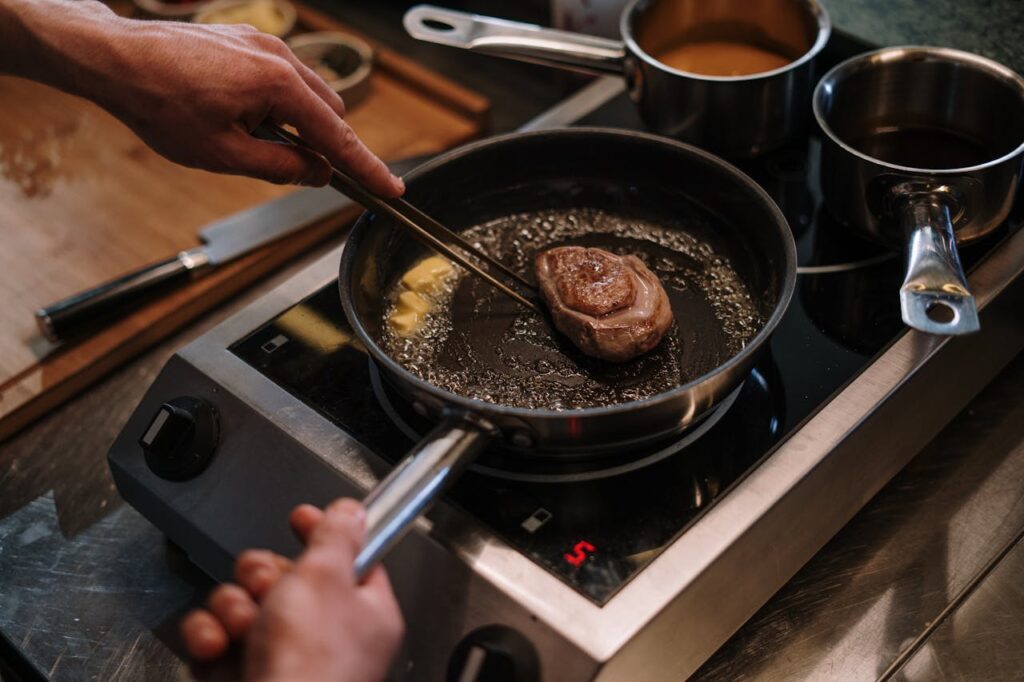
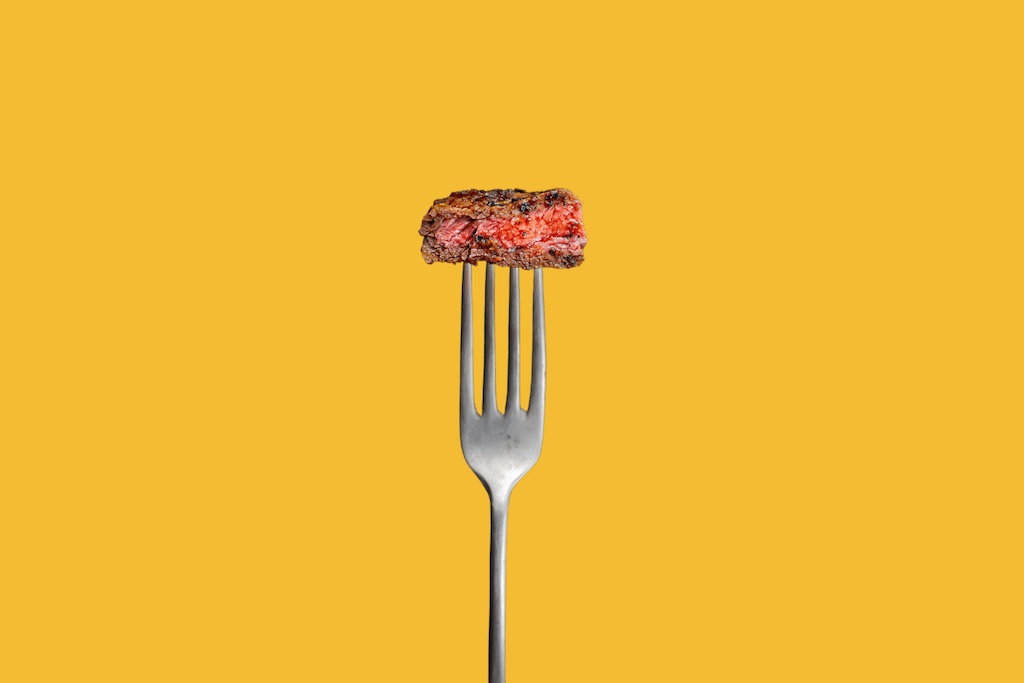
Doneness Test
Yep, it’s all about personal preference again, as well as the degree of doneness as appropriate to the cut you’ve bought. And don’t let anyone tell you otherwise. As a general rule of thumb, eschew erratic checking methods like pressing your palm or forehead or whatever, and instead just invest in a meat thermometer. After all that careful sourcing, you’ll want something failsafe. No one wants a well-done steak when they were going for medium rare, right?
Rest Well
For all the contradictory advice out there on steak cooking, the received wisdom, the old wive’s tales, the counter-arguments steeped in science, there’s one thing everyone agrees on; you need to rest your meat. Generally, you’ll want to let it relax for about as long as you cooked it for, if not a little longer. That way, the juices will redistribute evenly and you won’t lose that much sought after tenderness when you finally get to cut into it. Just remember to serve some salad on the side, to keep everyone happy.

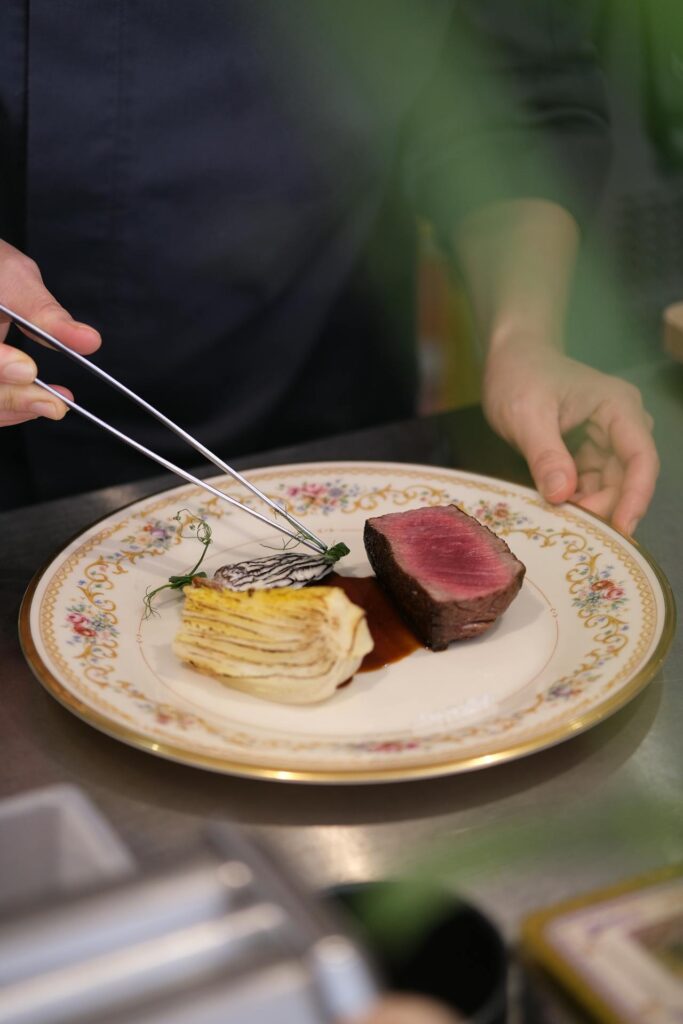
What To Drink With Your Steak
Wine Pairings
Of course, the absolute classic drink of choice with steak is a robust, full bodied red wine. The rich, savoury flavours of a properly cooked steak are beautifully complemented by the depth and complexity of a good red. Such a good pairing it is, that one without the other feels strange. Here are a few suggestions.
- Cabernet Sauvignon: This full-bodied wine is a classic choice for steak. Its high tannin content helps to cut through the richness of the meat, while its dark fruit flavors and hints of spice enhance the steak’s natural flavors.
- Malbec: Known for its deep color and intense fruit flavors, Malbec is another excellent choice. Argentinian wine types, particularly Malbec, are renowned for their bold profiles that pair well with the hearty flavours of a steak, especially if you’re enjoying a cut with a good amount of marbling.
- Syrah/Shiraz: Whether you opt for a Syrah from France or a Shiraz from Australia, this wine’s peppery notes and dark fruit flavors make it a great match for a juicy steak. It’s particularly good with cuts like ribeye or skirt steak.
Read: The best steakhouses and parrillas in Buenos Aires
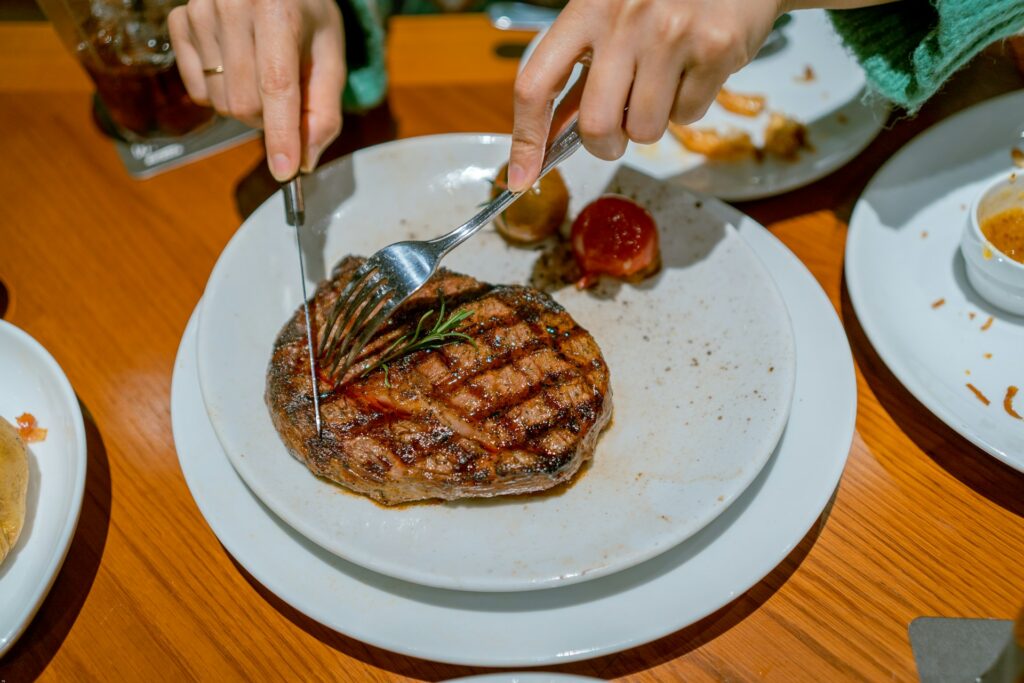
Beer Pairings
If you prefer beer over wine, there are plenty of options that can stand up to the bold flavours of a steak:
- Stout: A rich, creamy stout with its roasted malt flavours can be a fantastic pairing with steak. The slight bitterness and coffee-like notes of a stout can complement the charred crust of a well-seared steak.
- IPA (India Pale Ale): The hoppy bitterness of an IPA can cut through the fattiness of a steak, providing a refreshing contrast. Look for a balanced IPA that offers both bitterness and a hint of malt sweetness.
- Amber Ale: With its caramel malt backbone and moderate hop bitterness, an amber ale can enhance the savory flavors of a steak without overpowering it. It’s a versatile choice that pairs well with a variety of cuts.
Non-Alcoholic Options
For those who prefer a non-alcoholic beverage, there are still plenty of delicious options that can complement your steak:
- Sparkling Water with a Twist: A refreshing sparkling water with a slice of lemon or lime can cleanse your palate between bites, allowing you to fully enjoy the flavors of your steak.
- Iced Tea: A smart move when pairing with steak, as the high tannins in tea mimic those in a full-bodied red wine. Opt for an unsweetened iced tea with a splash of lemon for a refreshing, palate-cleansing and complementary drink.
- Non-Alcoholic Red Wine: If you enjoy the taste of wine but prefer to avoid alcohol, there are several high-quality non-alcoholic red wines available. These can offer the same depth of flavor and complexity as their alcoholic counterparts, making them a great choice for pairing with steak.
No matter your preference, the right drink can elevate your steak experience, bringing out the best in both the food and the beverage.
The Bottom Line
Cooking the perfect steak is an art that combines quality ingredients, precise techniques, and a bit of personal preference. By following our IDEAL steps and pairing your steak with the right drink, you can elevate your steak dinner to dizzy new heights.





